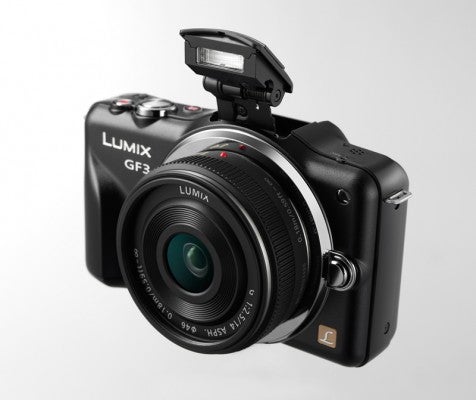The Lumix GF3 is the world's smallest and lightest interchangeable lens camera. What Digital Camera's Panasonic Lumix GF3 review checks if the downsizing makes for the best GF-series model yet...
Panasonic Lumix GF3 Review
Image Quality
Panasonic Lumix GF3 review – Image Quality
Panasonic GF3: Tone & Exposure
There are the three standard exposure metering settings – evaluative, centre-weighted and spot. The GF3’s exposures are well-balanced and avoid excess over- or under-exposure in most situations. Tones can be towards the darker side of the palette, though by default the ‘i.Dynamic’ mode gives a push to shadow areas for more equal exposure. This can be turned off or has three levels of strength to choose between.
Panasonic GF3: Colour & White Balance
Colour is generally neutral when using Auto White Balance, though some artificial lighting conditions cause a yellowish cast.
Panasonic’s former ‘My Color’ modes take on the new ‘Creative Control’ guise, an area to enhance colouration and effects using presets such as ‘Expressive’, ‘Retro’, and ‘High Key’ among others.
Panasonic GF3: ISO Sensitivity & Image Noise
Unlike the G-series models further up the range the GF3 retains a conservative 12.1MP sensor. In our books this can only be a good thing, as excess pixels in such a small sensor area would otherwise hinder final image quality.
The ISO 160-6400 range is broad and images are of good quality up to ISO 400, while ISO 800 shows a stronger presence of grain running throughout the images.
However, even from the lowest settings (in lab tests) there’s the subtlest hint of colour noise that can be spotted in blacks and darker tones. This isn’t problematic in real world images, though the higher ISO settings from ISO 1600 and above do suffer a number of quality issues including softness and colour noise presence. The two higest sensitivities, ISO 3200 and ISO 6400, are certainly an improvement over the previous GF2’s performance, yet are still very soft and without the level of detail required.
Panasonic GF3: Sharpness & Detail
Using both the 14mm pancake and 14-42mm lenses results were good, albeit without the ultra-fine sharpness and detail for more delicate subjects and lines. Slight softness can be apparent due to processing, where using lower ISO settings and shooting in Raw can help achieve the most from a file.







